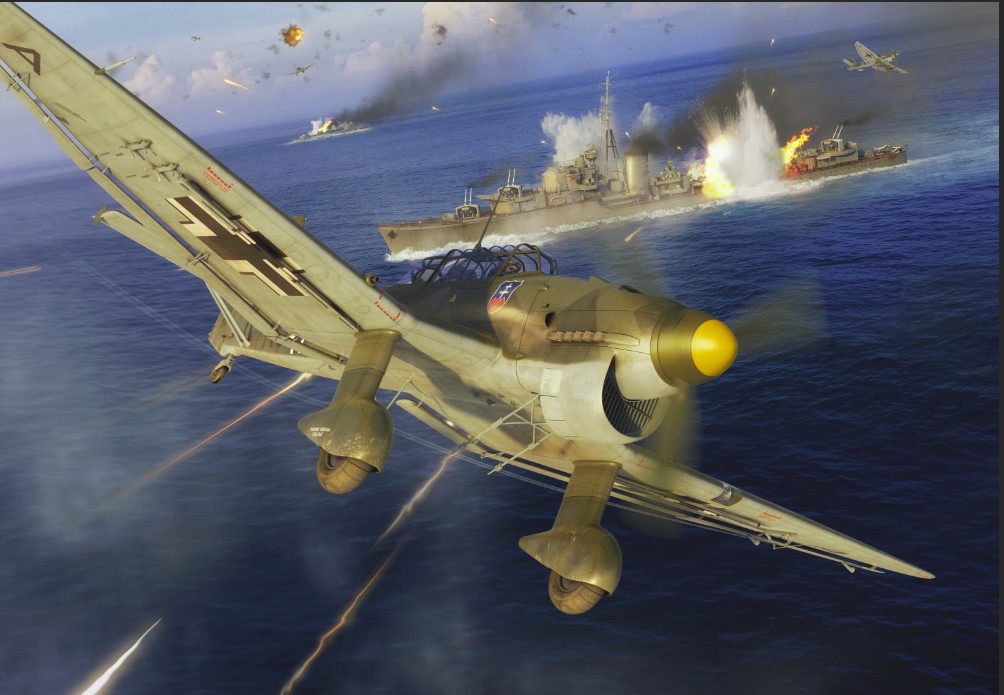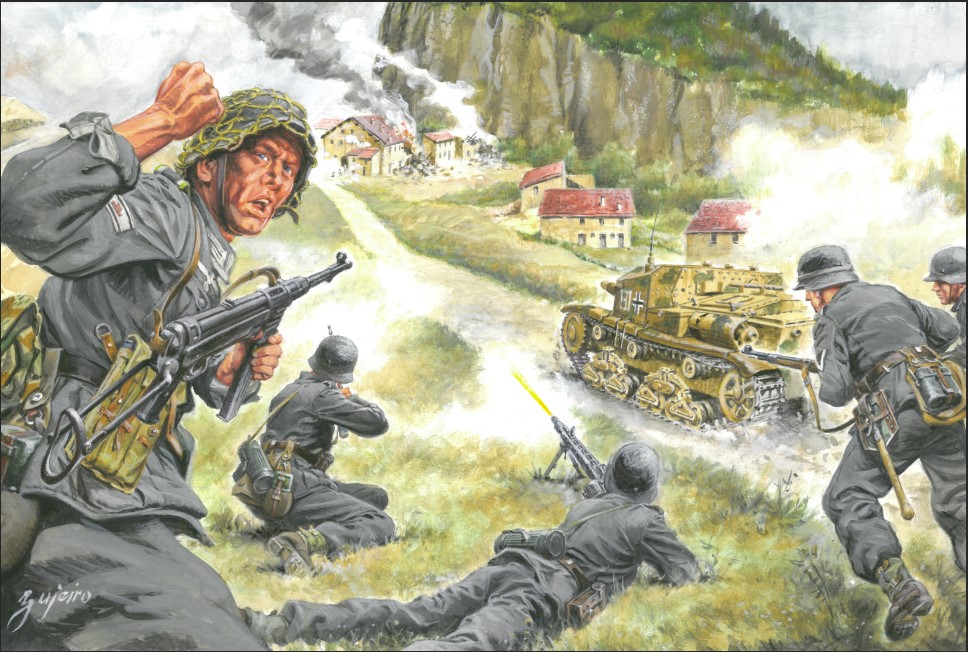

Naval Battle of Crete 1941: The Royal Navy at Breaking Point
By Angus Konstam
Illustrated by Adam Tooby
THE SINKING OF HMS KELLY, 23 MAY 1941 (PP. 70–71)
Late on ‘Black Thursday’ (22 May), as the British battle fleet withdrew, Rear Admiral King detached Captain Lord Louis Mountbatten’s 5th Destroyer Flotilla to conduct a night-time sweep to the north of Crete. This was successful, but his five destroyers became divided, and so by dawn, as Mountbatten headed south down the western coast of Crete, his own destroyer Kelly was only accompanied by her sister ships Kashmir and Kipling. Soon afterwards, the destroyers were spotted by the Luftwaffe. Mountbatten’s ships evaded several attacks by highflying Ju 88 bombers, but at 0755hrs two squadrons of Ju 87 ‘Stukas’ from I./StG 2 appeared, and began their attack. The destroyers’ fast evasive manoeuvres saved them from being hit by the first two waves, but their luck ran out during the third attack. Kashmir was hit amidships, and she immediately began to founder. Minutes later, Kelly was struck too, a 250kg bomb exploding aft beside ‘X’ turret. Her engines were still running as she capsized. Shown here is the scene moments after Kelly was hit. She is already listing heavily to port, while a fourth wave of ‘Stukas’ begin their own attack. On Kelly’s bridge, Mountbatten gives the order to abandon ship.
Requested by Mark L.

Assault on the Gothic Line 1944: The Allied Attempted Breakthrough into Northern Italy
By Pier Paolo Battistelli
Illustrated by Ramiro Bujeiro
COMPANY K, US 361ST RCT AT LIVERGNANO, 10 OCTOBER 1944 (PP. 66–67)
Having been tasked with taking the town of Livergnano, where Route 65 cuts a passage through the 5km-long escarpment, I./361st RCT of US 91st Division faced a German counter-attack that was successfully repulsed, the enemy being driven back into the town. At this point, Captain Chatlain Sigman, Company K’s commander, led the 3rd Platoon forward and, using the misty conditions for concealment, stormed into Livergnano only to be forced by German machine-gun fire to take cover in a large house in the centre of the town, while ten other men took shelter in a nearby pigsty. After dark, Captain Sigman gathered the rest of Company K at Livergnano and set up a defensive strongpoint in the large building with about 80 men.
From dawn the following day, the Germans, having spotted the location of Company K, began shelling the house with heavy mortar fire. A first German attack took place shortly after dawn, but it was repulsed. The other companies of the US 1st Battalion, attempting to reach Livergnano to help Company K, were held back by German fire from the escarpment, and problems with communications added further complications. In late morning, the Germans attacked again, this time with the support of a self propelled gun, and eventually they managed to reach and take the building, capturing the remnants of Company K. Only the ten men who were sheltering in the pigsty were able to make their way back to 1st Battalion under cover of darkness.
Requested by Kyle Lai.

Soviet Tanks in Manchuria 1945: The Red Army's ruthless last blitzkrieg of World War II
By William E. Hiestand
Illustrated by Henry Morshead and Irene Cano Rodríguez
SMERTNIKS ATTACK SOVIET TANKS
While the 1st Red Banner Army approached Mutanchiang from the north, the 5th Army attacked from the east. On August 14, elements of the 5th Army’s 210th Tank Brigade and 63rd Rifle Division attacked toward the headquarters of the 126th Infantry Division. A suicide squad from a transport unit threw themselves against the tanks carrying explosives, claiming five destroyed. In this scene, the Soviet tank riders are firing and dismounting as the Japanese attackers attempt to reach their targets. Japanese officers reported their frustration in post-war accounts due to their inability to halt Soviet tanks with the available antitank guns and artillery. Japanese units were forced to resort to attacks by suicide squads, dubbed smertniks (condemned men) by the Soviets, and there was at least one reported attempt to crash kamikaze aircraft into tank columns. The Soviets lost relatively few tanks to enemy action during the campaign, but large numbers due to mechanical problems or the difficult terrain.

Comments
You must be logged in to comment on this post. Click here to log in.
Submit your comment